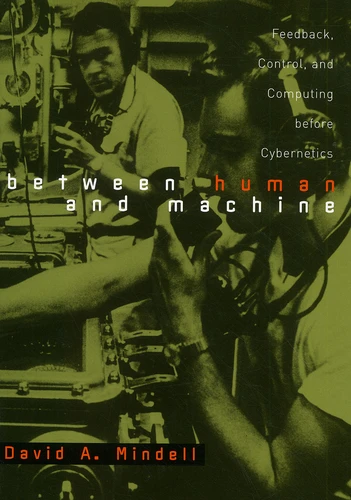Between Human And Machine. Feedback, Control, And Computing Before Cybernetics
Par :Formats :
- Paiement en ligne :
- Livraison à domicile ou en point Mondial Relay indisponible
- Retrait Click and Collect en magasin gratuit
- Nombre de pages440
- PrésentationRelié
- Poids1.135 kg
- Dimensions18,5 cm × 26,2 cm × 3,5 cm
- ISBN0-8018-6895-5
- EAN9780801868955
- Date de parution05/11/2002
- ÉditeurJohns Hopkins
Résumé
Today, we associate the relationship between feedback, control, and computing with Norbert Wiener's 1948 formulation of cybernetics. But the theoretical and practical foundations for cybernetics, control engineering, and digital computing were laid earlier, between the two world wars. In Between Human and Machiné : Feedback, Control, and Computing before Cybernetics, David A Mindell shows how the modem sciences of systems emerged from disparate engineering cultures and how they converged during World War II. Mindell examines four diffferent arenas of control systems research in the United States : the US Navy, the Sperry Gyroscope Company, the Bell Telephone Laboratories, and Vannevar Bush's laboratory at MIT. Each of these institutional sites had unique technical problems, organizational imperatives, and working environments, and each fostered a distinct engineering culture. Each also developed technologies to represent the world in a machine. At the beginning of World War II, President Roosevelt established the National Defense Research Committee, one division of which was devoted to control systems. Mindell shows how the NDRC brought together representatives from the four pre-war engineering cultures, and how its projects synthesized conceptions of control, communications, and computing. By the tune Wiener articulated his vision, these ideas were already sufiFusing through engineering. They would profoundly influence the digital world. As a new way to conceptualize the history of computing, this book will be of great interest to historians of science, technology, and culture, as well as to computer scientists and theorists.
Today, we associate the relationship between feedback, control, and computing with Norbert Wiener's 1948 formulation of cybernetics. But the theoretical and practical foundations for cybernetics, control engineering, and digital computing were laid earlier, between the two world wars. In Between Human and Machiné : Feedback, Control, and Computing before Cybernetics, David A Mindell shows how the modem sciences of systems emerged from disparate engineering cultures and how they converged during World War II. Mindell examines four diffferent arenas of control systems research in the United States : the US Navy, the Sperry Gyroscope Company, the Bell Telephone Laboratories, and Vannevar Bush's laboratory at MIT. Each of these institutional sites had unique technical problems, organizational imperatives, and working environments, and each fostered a distinct engineering culture. Each also developed technologies to represent the world in a machine. At the beginning of World War II, President Roosevelt established the National Defense Research Committee, one division of which was devoted to control systems. Mindell shows how the NDRC brought together representatives from the four pre-war engineering cultures, and how its projects synthesized conceptions of control, communications, and computing. By the tune Wiener articulated his vision, these ideas were already sufiFusing through engineering. They would profoundly influence the digital world. As a new way to conceptualize the history of computing, this book will be of great interest to historians of science, technology, and culture, as well as to computer scientists and theorists.

